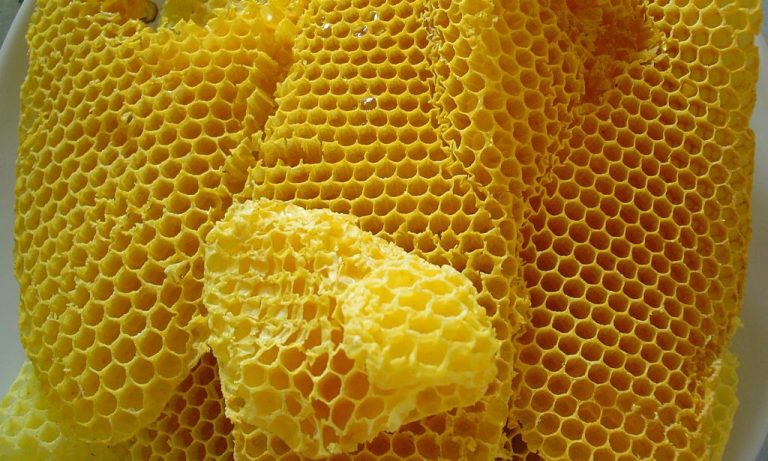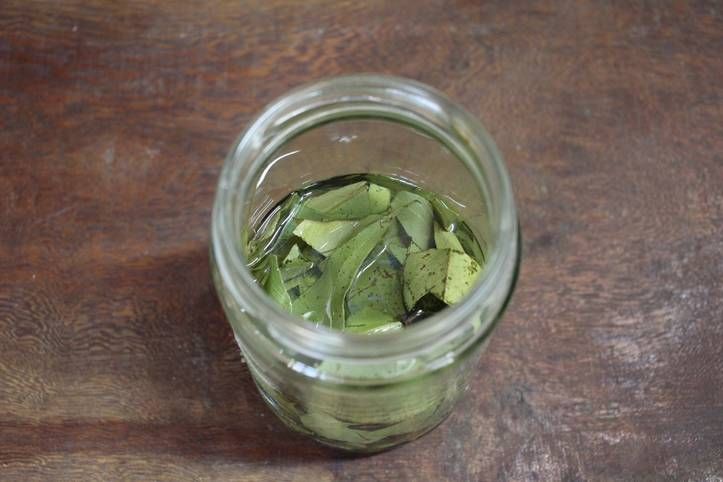Does Soap Have Wax In It?
What is Soap?
Soap is a cleaning agent created by the chemical reaction between a fat or oil and an alkali, such as lye. The earliest recorded evidence of soap-like materials dates back to around 2800 BC in ancient Babylon[1]. Soap serves the key purpose of removing oils, dirt, and other impurities from surfaces through the process of emulsification. The hydrophilic head of a soap molecule bonds with water while the hydrophobic tail bonds with oils and grease. This allows soap to act as a bridge between polar water and nonpolar oils, allowing the oils to be suspended in water and rinsed away.
The process of making soap has remained relatively unchanged for thousands of years. Animal or vegetable fats are combined with an alkali, boiled, and cooled. The earliest soaps were made by boiling fats with ashes from fires. Around 1000 AD, soapmakers in the Middle East replaced wood ash with soda ash and produced soap cakes that were harder and milder than previous versions. In modern times, sodium hydroxide is typically used in place of traditional potash to create a wide array of soaps, detergents, and other cleaning agents.
Ingredients in Soap
The basic ingredients in any soap are oils/fats, lye, and water. Common oils and fats used in soapmaking include coconut oil, olive oil, palm oil, shea butter, and cocoa butter (Soap Guild). When combined with lye and water through the process of saponification, the oils and fats turn into soap.
Lye, scientifically known as sodium hydroxide, is a critical ingredient that initiates the chemical reaction to turn oils/fats into soap. Along with water, the lye works to saponify the oils and fats (Soap Fact Sheet).
Some less common ingredients in handmade soaps include glycerin, various botanical oils, salts, clays, and fragrances. Glycerin is produced during saponification and helps provide moisturizing properties. Essential oils like lavender, peppermint, and tea tree add natural fragrance and skin benefits. Salts and clays may be used for exfoliation, while botanical oils like jojoba, rose hip seed, and argan provide extra moisturizing qualities.
Does Soap Contain Wax?
Wax is sometimes included as an ingredient in manufactured soap. Wax refers to a class of compounds that are malleable solids at room temperature and become free-flowing liquids when heated. Common types of wax include beeswax, paraffin wax, carnauba wax, and candelilla wax. Waxes can serve several purposes in soap:
- Hardening the bar – Waxes like beeswax and soy wax contain fatty acids that help harden and firm up soap bars, improving their texture and making them less mushy.
- Moisturizing – Some waxes are emollients that can help moisturize and soften skin. Beeswax in particular is known to have skin conditioning properties.
- Lather boosting – Waxes can stabilize and increase lather, creating a richer, creamier foam when the soap is used.
- Decorative – Waxes can produce visual effects like marbling, pearlescence, or transparency in clear soaps.
While not all soaps contain wax, it can be an added ingredient depending on the intended properties and benefits of the final bar. Wax content in soap is typically 1-6%.
Functions of Wax in Soap
Wax serves several important functions in soap making. The primary benefits wax provides are:
Makes soap hard – The fatty acids in wax help harden the bar, improving its ability to last longer with repeated use. Hardness is an important quality, as a bar that dissolves quickly provides less value. Waxes like beeswax and soy wax contain fatty acids that contribute to bar firmness.
Adds opacity – Many waxes make soap more opaque and less transparent. Opacity results in a creamier look and smoother feel. Waxes like paraffin and palm wax help make soap bars more opaque.
Increases melt point – Waxes raise the temperature at which the soap begins to melt. A higher melt point means the bar retains its shape better in hot water. Waxes like candelilla and carnauba wax boost the melt point of soap.
In summary, incorporating wax into soap recipes lends hardness, opacity, and heat stability – all useful functional properties in a quality bar of soap. Wax content can range anywhere from 1-15% in typical soap formulas.
Types of Wax Used
There are several different types of wax that can be used in soap making. Some of the most common include:
Beeswax – This natural wax is secreted by honey bees to construct their honeycombs. It has a pleasant honey-like scent and is rich in vitamin A. Beeswax helps harden soap and adds a glossy finish. It also increases moisturizing properties. Sources: https://www.kosterkeunen.com/selecting-waxes-the-role-of-waxes-in-bar-soaps-part-2/
Paraffin Wax – This petroleum-based wax is commonly used to help harden beauty products. In soap, it increases hardness and makes the bar more glossy. Some find it can dry out skin. Paraffin wax is often used in combination with other waxes. Sources: https://www.soapmakingforum.com/threads/waxes-in-soap.74080/
Soy Wax – Made from hydrogenated soybean oil, soy wax is a natural alternative to paraffin. It is traditionally softer but helps moisturize skin. Some soap makers use soy wax to create creamier lather. Sources: https://www.soapmakingforum.com/threads/waxes-in-soap.74080/
Palm Wax – Derived from palm oil, palm wax provides hardness to soap without being drying. It also helps stabilize lather. Palm wax is often used to replace paraffin in natural soap recipes. Sources: https://www.kosterkeunen.com/selecting-waxes-the-role-of-waxes-in-bar-soaps-part-2/
Benefits of Wax in Soap
Wax offers several benefits when used in soapmaking:
- Harder, longer-lasting bars – Waxes like beeswax contain more saturated fatty acids than oils, which helps harden soap and create a firmer bar that lasts longer (source). The wax structure helps lock in fragrance and prevents the soap from melting away too quickly.
- Creamier lather – Waxes can contribute to a thicker, creamier, more stable lather. The wax molecules help suspend tiny air bubbles, creating a lush, moisturizing lather (source).
- Opacity – Many waxes like beeswax help make translucent soap bars more opaque and less see-through. The waxy particles scatter light to make the bar appear more solid.
- Improved skin feel – Waxes can leave a protective layer on the skin, helping retain moisture while still allowing the skin to breathe. This gives the soap bar a smooth, silky after-feel.
Drawbacks of Wax
While wax can provide some benefits in soapmaking, there are also some potential drawbacks to be aware of:
Wax may irritate sensitive skin. According to Soapy Science: Beeswax in Soap, the wax coating left behind on skin after using a bar soap containing wax may clog pores and cause irritation for people with sensitive skin. Using too high of a wax percentage could exacerbate this issue.
The high melt point makes remixing difficult. As explained on Beeswax in Soap Making, beeswax has a very high melt point of around 144-147°F. This means that once soap containing wax has hardened, it can be difficult to re-melt and remix if any issues arise. The high melt point wax may remain in solid chunks rather than fully integrating back into the melted soap.
Natural vs Synthetic Wax
Two of the most common types of wax used in soapmaking are beeswax, which is a natural wax, and paraffin wax, which is a synthetic wax.
Beeswax is a natural wax produced by honey bees. It has been used in soapmaking for centuries. Some of the benefits of beeswax in soap include:
- It helps harden and strengthen soap bars
- It provides a smooth texture and consistent lather
- It’s non-comedogenic and gentle on skin
- It has a lovely honey-like scent
Some drawbacks of beeswax are that it can make soap more brittle and prone to cracking. It’s also more expensive than synthetic waxes. (https://www.kosterkeunen.com/selecting-waxes-the-role-of-waxes-in-bar-soaps-part-2/)
Paraffin wax is a petroleum-based synthetic wax. It became popular in the 20th century as a less expensive alternative to beeswax. Benefits of paraffin wax in soap include:
- It’s inexpensive and widely available
- It helps soap harden quickly and evenly
- It makes soap more glossy
- It boosts lather and scent throw
Some downsides are that paraffin wax can feel greasy on skin. There are also environmental concerns around petroleum-based ingredients. (https://www.vedaoils.com/blogs/candlemaking/paraffin-vs-beeswax)
In summary, beeswax is a more natural option while paraffin wax provides cost savings. Many soapmakers use a blend for optimal properties. The choice depends on individual preferences and priorities.
Amount of Wax Typically Used
Wax is generally used as a minor ingredient in soap recipes, typically comprising less than 5% of the total. According to Beeswax in Soap Making, beeswax is often incorporated into soap recipes at a usage rate of 1-2%. Even at these relatively low percentages, wax can provide benefits like hardness, conditioning, and creaminess to the final bar of soap.
Most soapmakers recommend keeping the wax content below 5% at most. Using too much wax could make the soap soft or sticky. For example, on the Soapmaking Forum, experienced soapmakers suggest limiting soy wax to 3-5% of the oil weight in cold process soap recipes. Exceeding the maximum usage levels could prevent the soap from hardening properly or lead to other problems.
In summary, while wax can be a useful addition, it is typically kept to modest amounts in most soap recipes. Following the standard guidelines of 1-5% will allow the benefits of wax to shine through without interfering with the overall soap-making process.
When to Use Wax in Soapmaking
Wax can be a useful additive for soapmakers looking to achieve certain properties or effects in their soap bars. Some key uses of wax in the different soapmaking processes include:
Cold Process Soap
In cold process soapmaking, wax is commonly used to produce harder bars of soap. Adding a hard wax like beeswax, soy wax, or rice bran wax will help slow trace, boost hardness, and improve mold release. Typical usage rates are 5-15% of oils. Waxes also help retain fragrance and can stabilize colorants. Sources: https://www.soapmakingforum.com/threads/soy-wax-use-in-soap.82437/, https://www.kosterkeunen.com/selecting-waxes-the-role-of-waxes-in-bar-soaps-part-2/
Hot Process Soap
With hot process soapmaking, wax can still help harden bars but is more commonly used for decorative effects. Wax embeds, swirls, and layers can create visual interest. Waxes with high melt points like soy wax and beeswax hold shape well for detailed designs. Usage varies based on desired design.
Melt and Pour Soap
For melt and pour soap bases, wax is an effective additive for making harder bars that resist melting. Paraffin wax is commonly added at 10-20%. Waxes can also be used to create texture or decorative accents on the surface of molded melt and pour bars. Beeswax, soy wax, and candelilla wax work well for adding texture.



